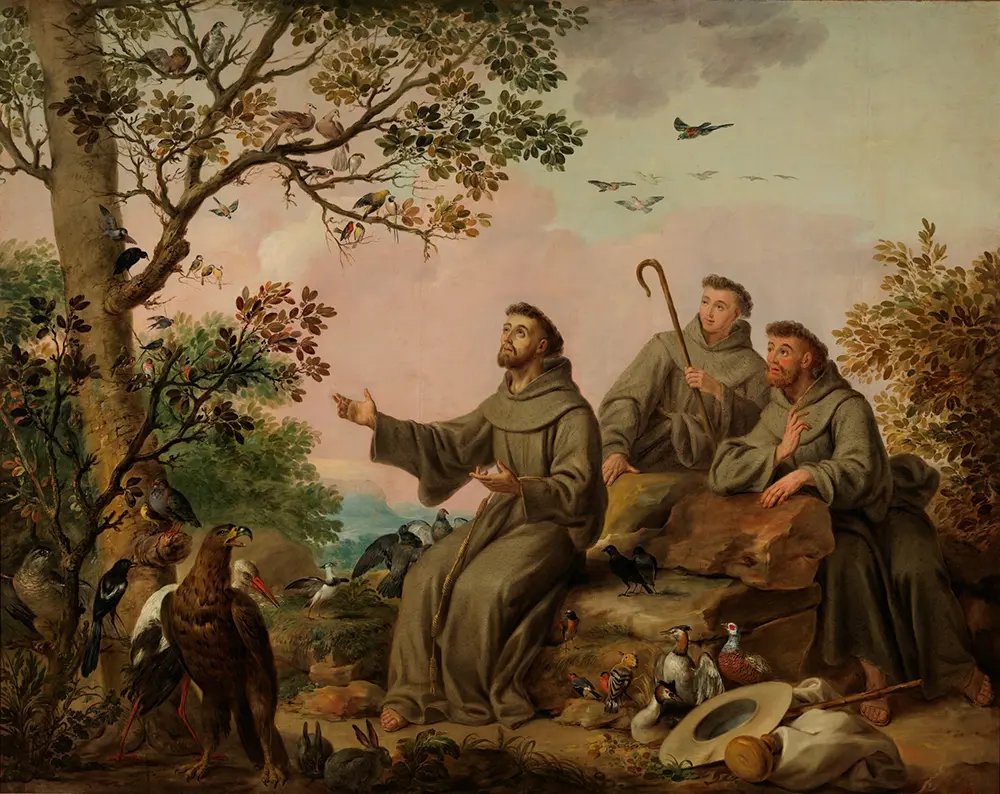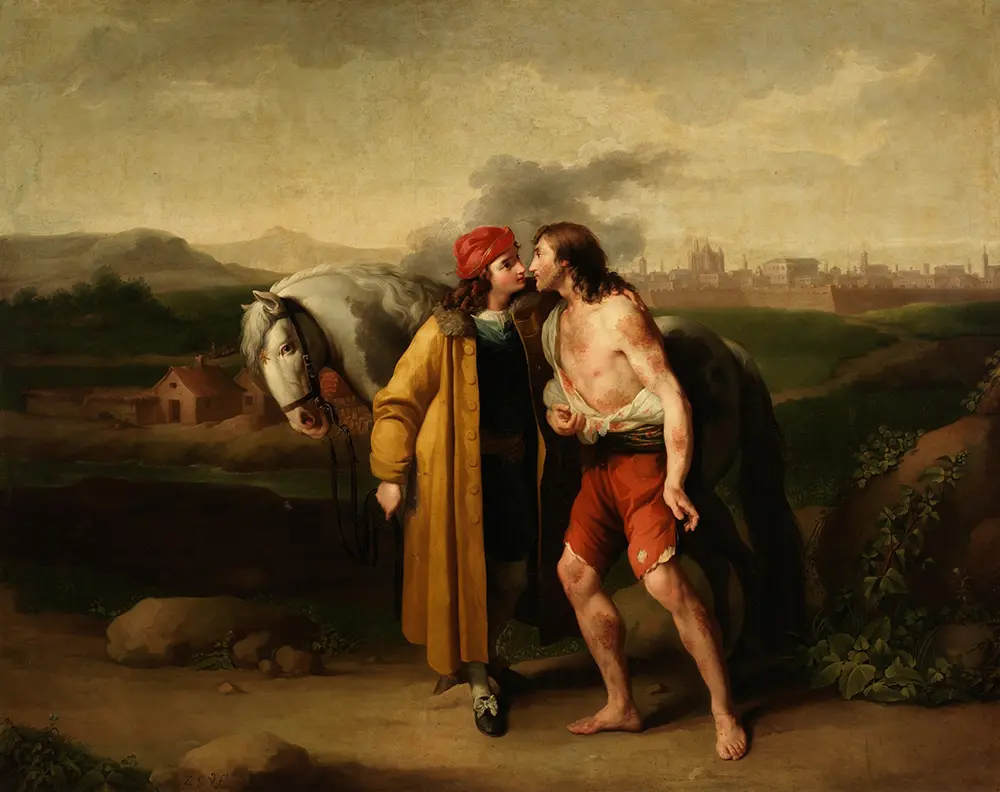
The October 4the universal Church looks at the figure of St. Francis of Assisi. Known as the Francesco d'Assisinicknamed il poverello d'Assisi (the poor man of Assisi), his life is an invitation to rediscover the joy in simplicity and unconditional love for Christ through the poverty. He was noted for his love for others, his detachment and his eagerness to reform the Church. He would never forget the words he heard in a dream in Spoleto: "....¿Why do you persist in seeking the servant instead of the Lord?"
His life took a new direction, guided by the constant desire to know what the Lord might be calling him to. Prayer and contemplation in the silence of the lands of Umbria led him to embrace as brothers the lepers and vagabonds for whom he had always felt disgust and repulsion.
Born Giovanni di Pietro Bernardone, he always had in his heart the desire to accomplish great undertakings; this is what at the age of twenty prompted him to leave, first to the war between Assisi and Perugia and then to the Crusades. Son of the rich cloth merchant Pietro di Bernardone, and of Pica, a lady of the Provençal nobility, he was born in 1182 and grew up in the comforts of family and worldly life. When he returned from the harsh experience of war, ill and agitated, he was unrecognizable to everyone. Something had deeply marked his mood, something different from the experience of the conflict.
Young Francis lived a life of opulence, dreaming of the glory of being a knight. However, God had other plans. After experiences as a prisoner of war and a serious illness, his restless soul began to search for a higher purpose. The turning point came at the hermitage of San Damiano, when, praying before a crucifix, he heard a voice saying to him: "Francis, go and repair my Church which, as you see, is in ruins". This call would mark the rest of his life and his vocation of service to the Church.
St. Francis understood that call in a literal way at first, dedicating himself to physically repairing hermitages. However, he soon realized that the Lord was asking him for something much more profound: a spiritual renewal of the Church through example. To this end, he stripped himself of everything. In a public and dramatic act, he renounced his father's inheritance, stripped himself of his luxurious clothes and consecrated himself to God, embracing what he called his Lady Poverty, in front of Bishop Guido.
This was not a poverty miserable or sad, but a free choice. For St. Francis of Assisithe poverty was the most direct way to imitate Christ, who "though he was rich, yet for our sake he became poor" (2 Cor 8:9). Possessing nothing, Francis became completely dependent on the Providence of God, finding immense joy in the little he had.
This attitude is a model for the Christian life and, in a particular way, for the priestly vocation, which demands a detached heart in order to serve God and souls without any attachment. The formation of priests continues to draw from this spirit of detachment.
His love for the poverty of Jesus led him to encounter Him in the most disadvantaged. The famous episode of the embrace of the leper symbolizes his total conversion: where before he felt repulsion, now he saw the suffering face of Christ. This love for the poor and the marginalized is a dimension of the service to the Church that every baptized person, and especially the priestis called to live.

The mission to repair the Church finally materialized in the founding of the Order of Friars Minor (Franciscans), a fraternity that lived the Gospel. sine glossathat is, without interpretations that would soften its radicalism.
Later, together with St. Clare, he also inspired the female branch of the Poor Clares. The example of Francis and his friars was a spiritual revival at a time when the Church was suffering in the midst of luxury and power struggles.
They demonstrated that true reform does not come from destructive criticism, but from personal holiness and obedience. A priestThe way to holiness, as tradition teaches us, can transform an entire parish. The road to that holiness is a constant struggle that lay and consecrated people must follow.
St. Francis of Assisi is also remembered for his deep love for Creation. In his famous Canticle of the Creatures, he praises God through "brother sun", "sister moon" and "sister our mother earth".
He was not an ecologist in the modern sense, but a mystic who saw in every creature the imprint of the Creator. Everything spoke to him of God, from a bird to a wolf.
This theological vision of nature, which inspired the encyclical Laudato Si' of Pope Francis, invites us to care for the world as a gift received from God.
The life of St. Francis of Assisi culminated in the gift of the stigmata, the signs of Christ's Passion imprinted on her own body for two years, a visible sign of her complete identification with her Lord.
His legacy teaches us that true joy is not in having, but in being. He reminds us of the importance of humility and obedience to the Church, even as we yearn for her reform.
For each priest, St. Francis is a mirrora call to live a new life poverty to preach the Gospel with life more than with words, and to love every soul as a gift from God. As St. Josemaría Escrivá taught in his book Loving the Churchlove for the Church passes through humble service and total dedication.
On the evening of October 3, 1226, when Sister Death came to visit him, he went out to meet Jesus with joy. He died on October 4, lying on the bare earth, faithful to his beloved poverty until the end.
Let us ask St. Francis of Assisi to intercede for us so that, like him, we may know how to strip ourselves of everything that separates us from God and joyfully embrace the daily cross, rebuilding the Church from the only place possible: our own heart.